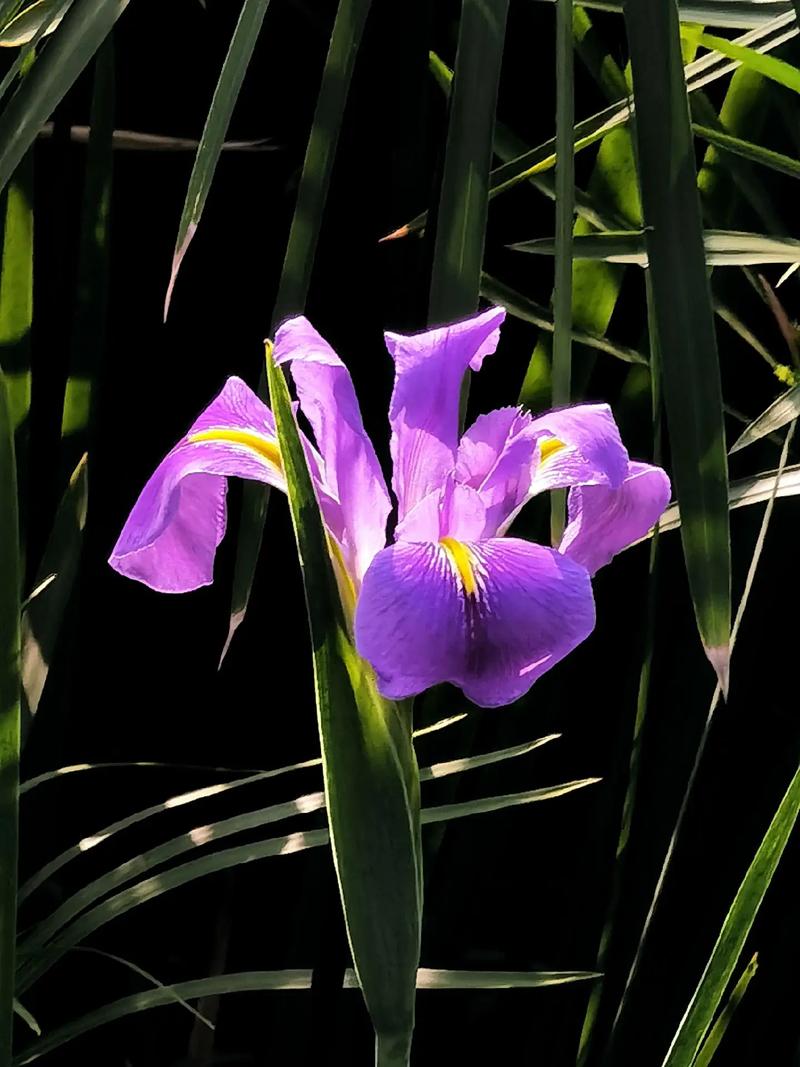Iris hexagona seed
Iris hexagona: Uses, Benefits, and Ecological Importance
Iris hexagona, commonly known as the Dixie iris or Louisiana iris, is a species of flowering plant in the Iridaceae family. Native to the southeastern United States, particularly in marshy or wetland areas, it is admired for its large, showy flowers and its adaptability to aquatic environments. This species is one of several that contribute to the popular group known as Louisiana irises.
Botanical Description
-
Growth Habit: Iris hexagona is a rhizomatous perennial plant that typically grows 2 to 4 feet (60–120 cm) tall.
-
Leaves: Long, sword-like, and arranged in a fan shape.
-
Flowers: Showy and elegant, often blue to violet, sometimes lavender or white. Each Flower has six segments (hence the name “hexagona”), and blooms in spring to early summer.
-
Habitat: Found naturally in swamps, ditches, and wet meadows. Prefers full sun to partial shade and thrives in moist to saturated soils.
Uses and Applications
1. Ornamental and Landscaping Value
-
Garden Planting: Iris hexagona is widely cultivated as an ornamental plant due to its beautiful and large blossoms. It is especially favored in water gardens, bog gardens, and rain gardens.
-
Wetland Restoration: Its tolerance for flooding and saturated soils makes it valuable for wetland and habitat restoration projects in the southeastern U.S.
2. Ecological Significance
-
Pollinator Support: The plant attracts bees, butterflies, and other pollinators. Its early blooms provide nectar in spring when food sources may still be limited.
-
Erosion Control: The dense rhizome root system helps stabilize soil in wetlands, preventing erosion and maintaining wetland integrity.
3. Cultural Importance
-
Louisiana Iris Group: Iris hexagona is one of the foundational species of the Louisiana irises, which are extensively hybridized for horticulture. These hybrids are a celebrated part of southern gardening and floral culture.
4. Educational and Botanical Interest
-
Due to its clear structure and adaptability, it is used in botany and ecology courses for plant identification, pollination studies, and wetland ecosystem teaching.
Medicinal or Traditional Uses
Iris hexagona is not known for significant medicinal use in modern herbalism. However:
-
Some Native American tribes have used related iris species for external applications, such as poultices or salves for wounds or skin ailments.
-
Caution is required, as the rhizomes and other parts of the plant contain potentially toxic compounds (such as iridin) that can cause irritation or gastrointestinal upset if ingested.
Toxicity and Safety
-
Toxic if Ingested: All parts of the plant, particularly the rhizomes, may cause nausea, vomiting, or skin irritation in humans and pets.
-
It is not recommended for use in herbal medicine without proper knowledge and guidance.
Conservation Status
-
Iris hexagona is not currently listed as endangered, but its wetland habitats are under increasing pressure from development, drainage, and pollution.
-
Conservation efforts to preserve natural wetlands indirectly help protect this species and its ecosystem.
Conclusion
Iris hexagona is more than just a beautiful flower—it is a vital part of southeastern wetland ecosystems. Its ornamental value, ecological contributions, and role in horticultural breeding make it a significant species for both gardeners and environmentalists. Although it lacks major medicinal applications, its importance in biodiversity and landscape design is undeniable.

